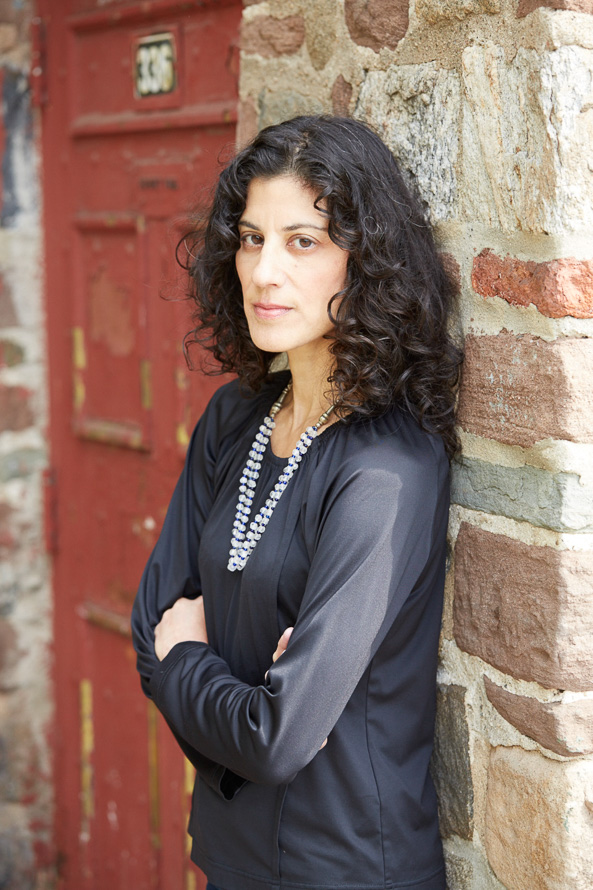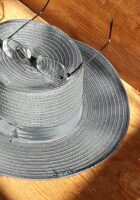Poem of the Week | July 04, 2022

“Willem de Kooning’s Woman I” by Diane Mehta
This week’s Poem of the Week is “Willem de Kooning’s Woman I” by Diane Mehta.
Diane Mehta was born in Frankfurt, grew up in Bombay and New Jersey, studied in Boston, and now makes her home in New York City. Her second poetry collection Tiny Extravaganzas is out with Arrowsmith Press in 2023. Her essay collection Happier Far comes out in 2024. New and recent work is in The New Yorker, Virginia Quarterly Review, Kenyon Review, American Poetry Review, and A Public Space. Her writing has been recognized by the Peter Heinegg Literary Award, the Café Royal Cultural Foundation, and fellowships at Civitella Ranieri and Yaddo. She was an editor at A Public Space, PEN America, and Guernica. Her latest project is a poetry cycle connected to the Divine Comedy. She is also collaborating with musicians to invent a new way of working through sound together.
Willem de Kooning’s Woman I
Again that day when I drop everything and train it midtown
to see her, my still-life mind eager for her distorted
gloss of figuration unfiguring herself, figuring out something
else beyond fieldscapes made of lines de Kooning puzzled out
so long before he jigsawed them along the contours of a woman
he refined, then scraped apart to reconstruct her once again.
He’d volume up and messify the flatness of the modern.
Quick slashing strokes, so much encrusted paint
her figure turned glyptic as he turned the art of painting intaglio.
All the matrices and semi-precious colors defining her figure
define so little that she recedes into the canvas as if engraved
and remains below the lines and curves of what we think a woman is—
Some passersby ooh and then, on closer look, appear repulsed
at this terrorizing doll of clashing lines and no perspective
but I see all the perspectives all at once.
If you construct a woman who refuses to cohere in an abstract field,
there’s no end to what you’ll find between her ribs, inside her
clawtooth mouth, behind her many angled eyes forever open with surprise.
It was never intaglio he wanted, only a process that signified process,
not progress, the daily work of working out what you care about most.
I think he shaped a woman who was his, in abstracted days ahead,
for she inched her chair toward him as he approached her with his brushes
and she filled the frame. It seems unlikely either cared about sunlight
for he could complicate the colors and watch her illuminate within.
Art can talk about love all it wants, but here is how to love—
a rag-bone female abiding his work and still becoming—
for even a paintbrush knows a woman has moving parts—
glitter, breast plates, blue-green curves and the uncoiling self,
savage and feverish. He designed her not to please, but doesn’t she?
Clearly she believes in beauty she is the resemblance of.
Author’s Note
In fall 2021, I was in residence at Civitella Ranieri in Italy. Every Tuesday, we had an outing to a medieval town to see marvelous paintings and frescoes by Italian artists, and often by Piero della Francesca. After several months of Piero’s work as a theme, and a week seeing more art in Rome, I returning to New York, missing some of my favorite paintings at the Museum of Modern Art (MOMA). I have visited this one de Kooning painting, Woman I, repeatedly over many decades, and have come to adore the colorful woman who fills the frame so ferociously.
I started writing the poem on the weekend after Thanksgiving, when I was thinking about what I cared about most. I love how gigantic this painting is, and how de Kooning gave his subject her full range of emotions and colors, and through her created such commotion on the canvas. Through this painting, he returned to figurative art after a period of abstraction. While researching, I discovered that he’d grown rather obsessed with the process of painting her. It’s not clear if this painting took him months or years. He scraped the paint off and began again, making and destroying and remaking her. In the process, I thought, he must have fallen in love—with her and with the surprises of discovering someone. When you’re making art, you may as well prolong and revel in the relationship for as long as possible, because life is short. Notably, de Kooning left her vividly alive in his wake, and now she is her own woman, watching us grow old. So she has fangs and she’s a little vampish, with her giant breastplates and her positioning! She has so much energy, and she is thrilling.
SEE THE ISSUE
SUGGESTED CONTENT

Poem of the Week
May 13 2024
“The Sacrifice of Isaac” by Chris Ketchum
“The Sacrifice of Isaac” by Chris Ketchum is our Poem of the Week. Chris Ketchum is from Moscow, Idaho. He received an MFA from Vanderbilt University and is a PhD… read more

Poem of the Week
May 06 2024
“from Elam House (Austin, Minnesota)” by G.C. Waldrep
“from Elam House (Austin, Minnesota)” by G.C. Waldrep is our Poem of the Week. G.C. Waldrep’s most recent books are feast gently (Tupelo, 2018), winner of the William Carlos Williams… read more

Poem of the Week
Apr 29 2024
“This Body is a Songbird in a Kiln” by Athena Nassar
“This Body is a Songbird in a Kiln” by Athena Nassar is our Poem of the Week. Athena Nassar is an Egyptian-American poet, essayist, and short story writer from Atlanta,… read more

